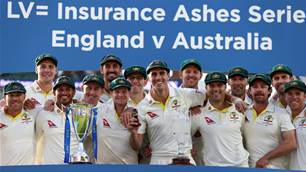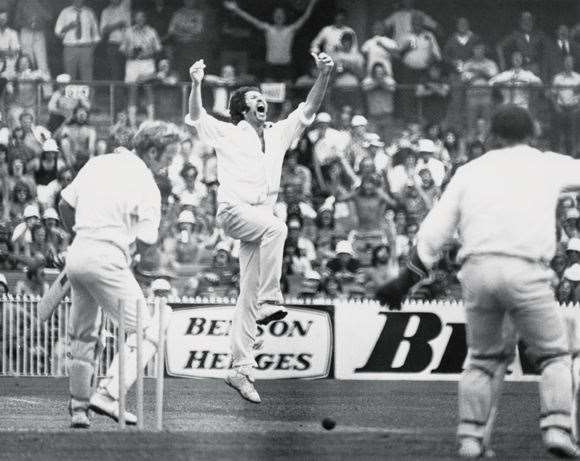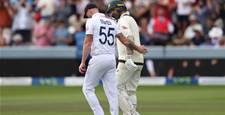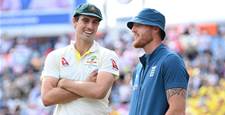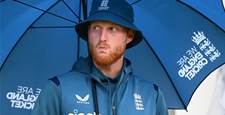Max Walker has reinvented himself time and again; from batsman to bowler, from radio star to television face, from architect to writer.
What do you remember most about your switch from Aussie rules to cricket?
It wasn’t a conscious decision. For me, it was an evolution. Most of life’s journey is meandering, like a switch-back railway, or whatever way you want to describe it. I was chosen to tour the West Indies in 1973. I had my architecture thesis to complete at the Royal Melbourne Institute of Technology when I came back. We didn’t get back until May that year. The footy season had started, obviously ‒ about five games in, so I had to make a choice. I didn’t think it was possible to be really successful at all three, so I retired from footy and I got through my architecture; I had to submit a month or so early in October so I could take on my cricket itinerary, and I just never got back to footy. At the ripe old age of 22, I’d had 85 senior games ... I never “retired”,
I just never got back to it.
Your career switch was a big one compared to today’s mere footy code-hoppers, hey?
I guess a lot of that was going on back then. Brian McKechnie, who played in the underarm incident, was a dual international. He played for the All Blacks. He was there at the crease when Trevor Chappell bowled the ball along the pitch. He threw his bat on the ground ... I was at fine leg, actually. That was the last game I played for Australia. I thought, “My goodness, he’s upset.”
Simon O’Donnell would’ve been the last bloke to do it; he played 26 or 27 games for St Kilda in the VFL, a handful of Test matches and 98 one-dayers. It’s a pretty unique group, though. There’s probably under ten who have played both Test cricket and AFL footy.
Speaking of uniqueness, is that something modern cricket could benefit from, more characters and personalities like there seemed to be in your playing days?
It was a game when we played. We were good enough to get picked to play this game for Australia. We would’ve played for nothing; we pretty much did. We got $400 before tax for a Test match, including the Centenary Test match when we signed up for World Series Cricket. Today, if you’re a good player, in the Twenty20 sense, some of the top players are getting two million bucks for 50 days in the IPL. Then you have one-dayers and Test matches as well. These guys are mega-million-dollar players. You’d have to do some research on the exact amounts of money, but when you think that 400 million sets of eyeballs tune into an IPL final or a World Cup final, then you can see the magnitude of Kerry Packer’s influence.
What was the best piece of batting advice you ever received?
The best coaching book I have ever seen, and I got it for my 12th birthday (my dad gave it to me, Big Max), was The Art Of Cricket by Sir Donald Bradman. That suggested, as a batsman, that you try and tread on the ball ... if you’re successful, you’ll break your ankle. Anyway, the idea was to pick the pitch of the ball. Second, it suggested that you “sniff” the ball; in other words, you get your head down over it, and you play with a very straight bat. And that worked very well. My last two knocks for North Hobart in district cricket batting at three were 117 and 119. That will probably shock you and a lot of other people, but I saw myself as a batsman!
How does a batsman who scores centuries become one of Australia’s best-known bowlers?
The Melbourne Cricket Club didn’t have a fast bowler, and I batted at ten in my first match. It was 14 weeks before I got a hit. While I opened the bowling at school, I’d taken one district wicket for North Hobart, and I’d been playing with them for five or six years, so how did it all happen? My first game for Victoria was a Colts match the year I came across in ’67; Dennis Lillee was 12th man for Western Australia. Rodney Marsh played, and there was a guy named Bruce Yardley, who opened the bowling for Western Australia, who turned out to be one of the great off-spinners that we’ve ever had. So life was very different, wasn’t it? Peter Bedford, the Brownlow medallist, played in that match, the late John Scholes, Les Joslin, there were some amazing names. But yeah, I thought I was a batsman.
Your front-on bowling action is one of the more interesting styles from over the years. How did it develop?
Just to get ahead at recess and lunch at school, really. Right arm over your left ear, ol’ legs crossed at the point of delivery ... fabulously mechanically perfect before biomechanics was even a word! I was never bio-mechanically perfect, but Lillee broke down ... I didn’t break down.
You developed into a cult hero ... who were your idols as a player?
Viv Richards was probably the best batsman I bowled against in my time. I like to brag that I got him out a couple of times ... for 181 and 179. But he really was the crown prince in those days. He was probably the most complete cricketer I had ever seen. He fielded beautifully, he bowled medium-quick, bowled spin, and was one of the truly great all-rounders, with Sir Garfield Sobers, who I only played against once ‒ when he played for South Australia.Of the bowlers, well, Lillee was just the best. He was an amazing machine when he walked through the gate and onto the field. He became this menace; technically brilliant with his ability to swing and bounce. So too was Sir Richard Hadlee; he was a great exponent of swing, but at the pace Lillee bowled, he was lethal. Chuck Thommo down the other end, just to put the fear factor between them, and they were unstoppable.
Do you have any hobby horses about the modern game which you like to ride?
The crowds and Test cricket need to maintain their currency as being the blue-chip. While we’re coming into Bollywood-style cricket now, with a lot of the Bollyood guys owning teams, dancing girls, and pyrotechnics, we have to look at Test cricket. One of the things I think should happen, without actually destroying the integrity and heritage of the game, is to play Tests over four days. Split up the number of overs, so you don’t bowl more overs on any given day. You can have a day-time and a night-time session. At the MCG, for example, they have a “night” ticket.
I don’t think there’s much wrong with the 50-over game. We just play too much of it. It’s a cash-cow, there’s no doubt about it. There’s only a couple of matches that count, and they’re the semi-finals and final of the World Cup. Seriously, the rest of them ... from a player’s point of view, there’s not much kudos in saying “we won the third match, Pakistan vs Australia, in Sharjah”. I mean, sorry, but big deal.
Related Articles
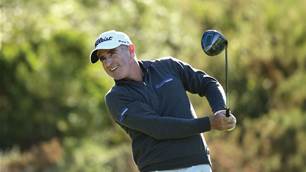
Video interview: Drinks With ... Matt Millar
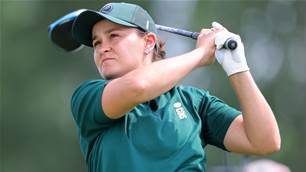
Barty headlines NZ Open ambassador line-up
